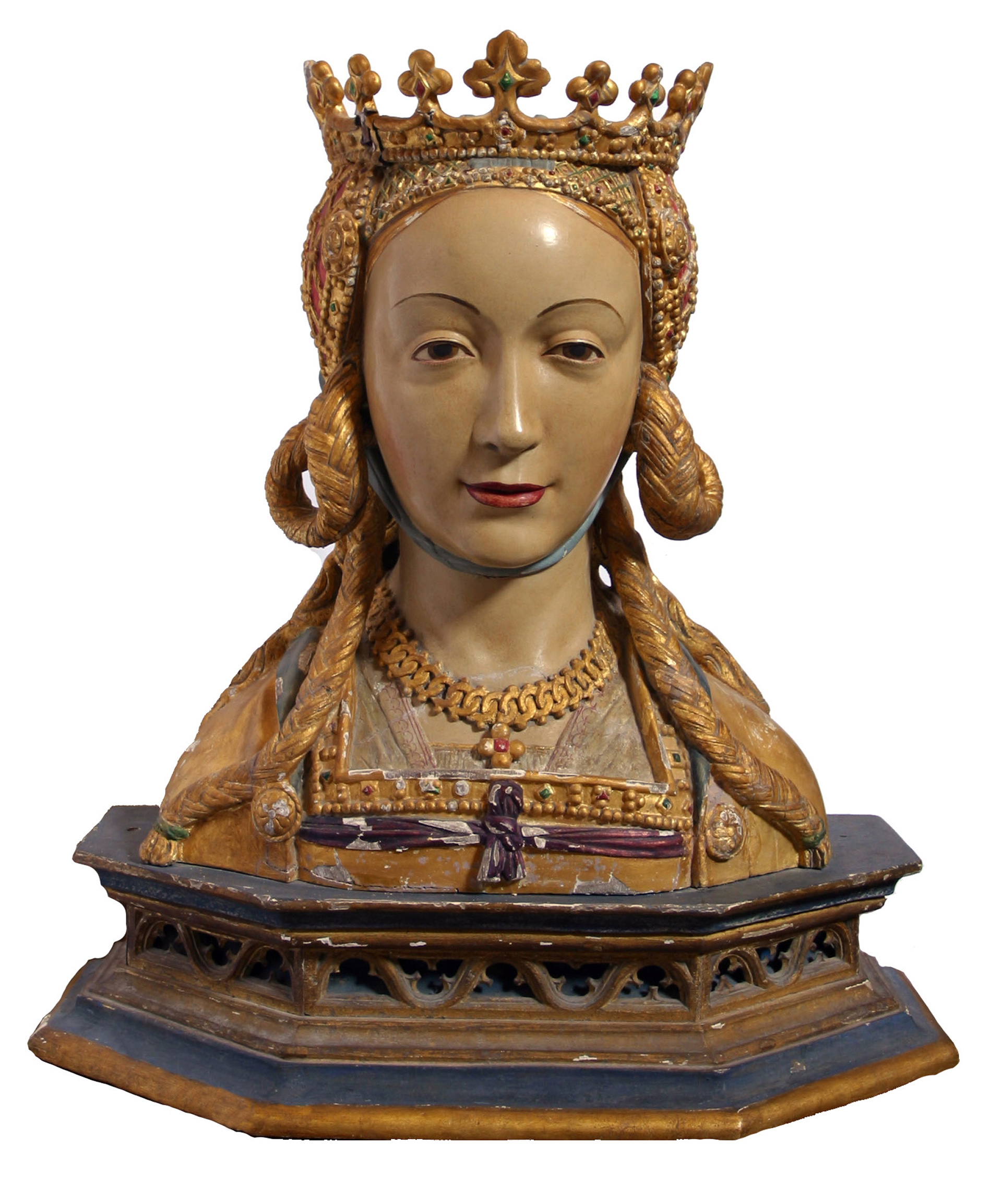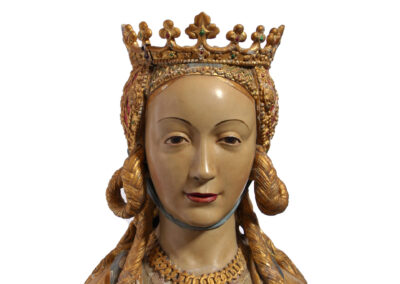Este busto relicario en roble dorado y policromado, identificado hoy con Santa Aurelia, es el único que se conserva de los cuatro que, hasta la Guerra Civil, se exponían bajo el retablo de la Transfiguración, en sendos nichos con puertas bajo llave que únicamente se abrían en días señalados.
En el inventario de 1547, dentro del apartado de reliquias, aparecen así mencionadas: «quattro cabeças de virgenes que dizen santa Marta, santa Benedicta, santa Paula y santa Egidea engastonadas en madera y doradas". The second, Saint Benedicta, is today identified as Saint Aurelia of Strasbourg.
In the "auténtica«, que aún se conserva en el fondo Sabiote del Archivo Ducal de Medinaceli, se da fe de que, el nueve de junio de 1521, Francisco de los Cobos, estando en Colonia como parte del sequito del emperador, solicitó al provincial de la orden franciscana algunas de las cabezas y reliquias que se veneraban en el monasterio de San Francisco de Colonia de las once mil vírgenes que, según el relato recogido en la Leyenda Dorada, acompañaban a Santa Úrsula a su regreso de Roma, y que, al llegar a Colonia en 452, fueron martirizadas por los Hunos, junto con todos los miembros del séquito, por resistirse a su apetito sexual. El provincial, en atención a la devoción que mostraba el secretario imperial y a que acompañaba la solicitud con un breve del papa Leon X, le entregó «una cabeza de las Once Mil Vírgenes y dos cabezas de los Niños Inocentes".
Posteriormente, Cobos buscó un artífice en Bruselas para que «eThe said heads of the Virgin and of the Innocents will be closed and placed in the manner and form in which they are presently found and displayed. «. Este documento ha servido a Emilio Ruiz de Arcaute para atribuir una autoría bruselense al conjunto de bustos relicarios de este tipo que se conservan en España. Las similitudes estilísticas entre estos bustos y la obra escultórica del taller de los Borman, especialmente en los tocados y vestidos, y su lenguaje tardo gótico, han permitido atribuir su autoría a este taller que, por ese tiempo, estaba regido por Jan III Borman y su hermano Passchier, a quien se considera el autor principal.
El busto representa a una mujer ricamente vestida y coronada, en cuya cabeza hay una tapa que permite ver la reliquia y está montada sobre una peana de molduración gótica que no es la original, sino que pertenecía a otro de los bustos perdidos en la Guerra Civil, momento en el que sufrió importantes daños que fueron restaurados por Juan Luis Vassallo.


